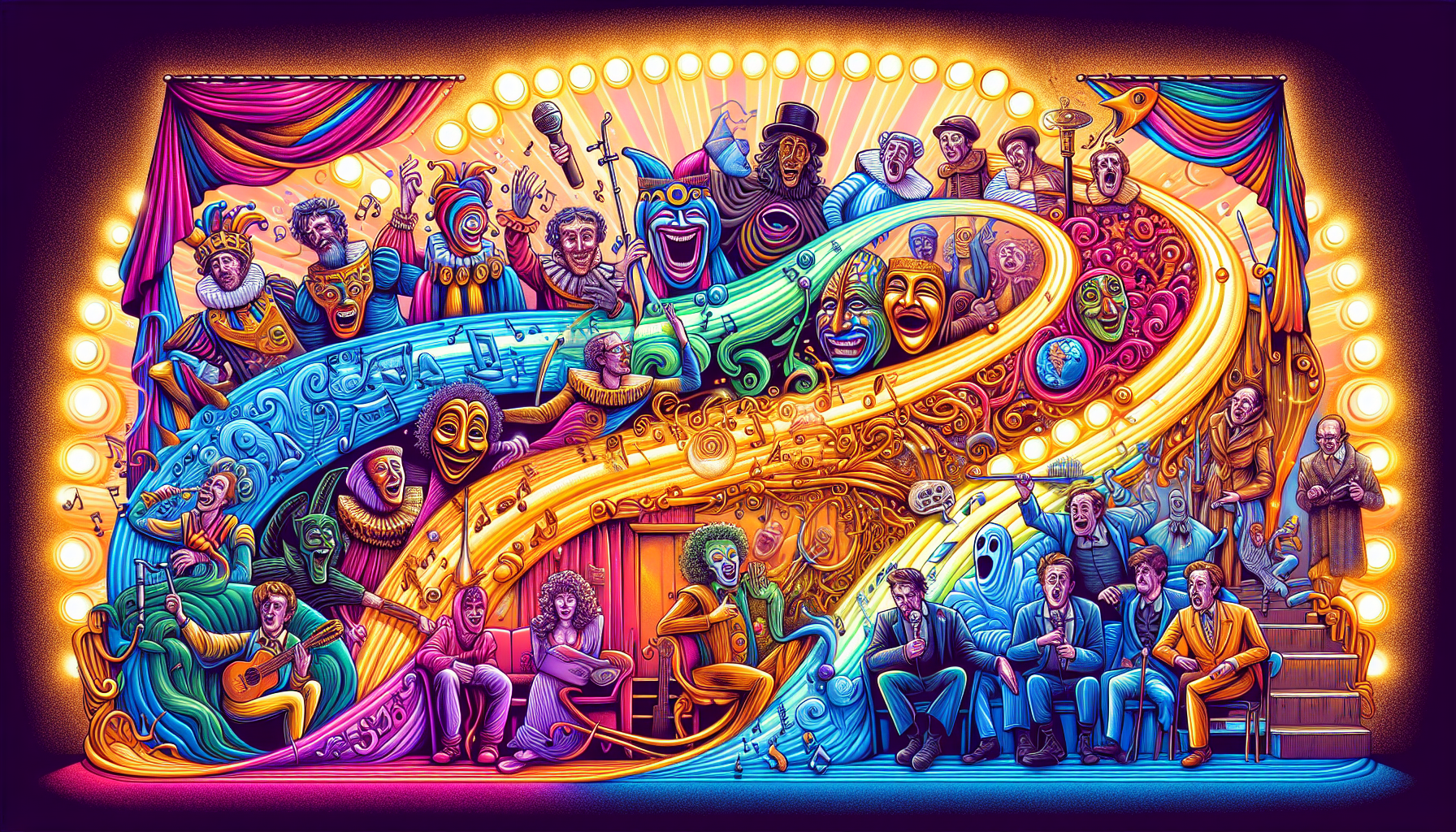
A Comedic Time Machine: From Slapstick to Snark
Oh, comedy, you shape-shifting trickster! From the banana peel mishaps of silent film days to the sassy comebacks of Twitter memes, you’ve had quite the glow-up. Let’s hitch a ride on the laugh-mobile and trace how comedy has morphed, twisted, and belly-flopped through the ages, leaving us giggling at its evolution.
The Old-School Slapstick Shenanigans
Back in the day, comedy was as subtle as a pie to the face. Early 20th-century audiences rolled in the aisles watching Charlie Chaplin’s Tramp character stumble and bumble through life. Slapstick ruled the roost, relying on physical comedy that was as exaggerated as your mom’s reaction to finding you made a TikTok account. The pratfalls, the bumbling police officers, and the wild chase scenes – it was all about the visual gags that didn’t need words to tickle a funny bone or two.
The Wisecracking Wordsmiths of Radio and Early TV
Cut to the emergence of radio and television, and suddenly, the quip was king. Legends like Jack Benny and Lucille Ball delivered punchlines with the precision of a sniper (a very funny sniper, mind you). Sitcoms became the new playground for comedic evolution, with shows like I Love Lucy proving that a woman could be both the lead and the funniest person in the room. As TVs rolled into more homes, the sharp-tongued banter of The Mary Tyler Moore Show and All in the Family reflected and challenged the social dynamics of their time, marrying humor with heart and a dash of social critique.
The Rise of The Everyman and Mockumentaries
Fast forward a bit, and the relatable everyman became all the rage. Characters that mirrored the everyday struggles of life, with a comedic twist, resonated more than ever. Jerry Seinfeld turned observations about NOTHING into a show about, well, nothing (Seinfeld). This era also birthed the mockumentary style, typified by The Office – an import from the UK glossed with American awkward sauce. In these shows, the humor was dry, often cringe, and delivered directly to the camera with a knowing look, as if to say, You believe this guy?
The Sardonic Internet and Meme Culture
And then came the internet, exploding like a comedy supernova, flinging shiny new tropes across the cosmos. Memes became the new frontier, packing maximum humor into minimal space. With the rise of social media platforms like Twitter and Instagram, sarcasm got a new lease on life. Phrases like thanks, I hate it or this is fine (as a cartoon dog sits in a burning room) captured a more cynical, yet still hilarious view of life’s perpetual dumpster fires.
The Nuanced Wit of the Streaming Era
Streaming platforms have now blown the comedy doors wide open. The binge-watching model allows for deeper character development, which in turn leads to more nuanced humor. Shows like Fleabag mix the tragic with the comic, allowing for a bittersweet flavor of funny that’s more reflective of the complexities of modern life. Similarly, BoJack Horseman turns a washed-up anthropomorphic horse into a surprisingly profound exploration of happiness and self-destruction, all while making you choke on your popcorn from laughter.
But, dear reader, this isn’t the final form of comedy, oh no. Comedy is a beast that cannot be tamed, and as society shifts, so too will our universal joke book. What’s next on the comedic menu? Deepfake satire shows, TikTok sitcoms, interactive comedy VR? Only time will tell, but one thing’s for sure, the future of comedy will be anything but boring.
So, keep your pies ready, your tweets sharp, and your streaming queues full because the evolution of comedy won’t wait up if you’re too slow to catch the punchline!






